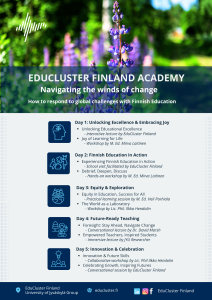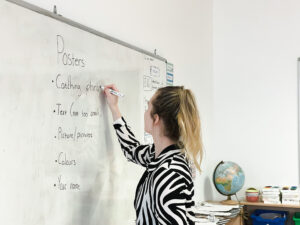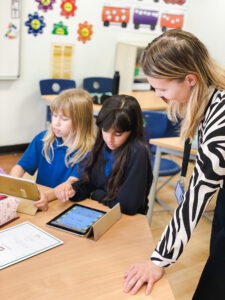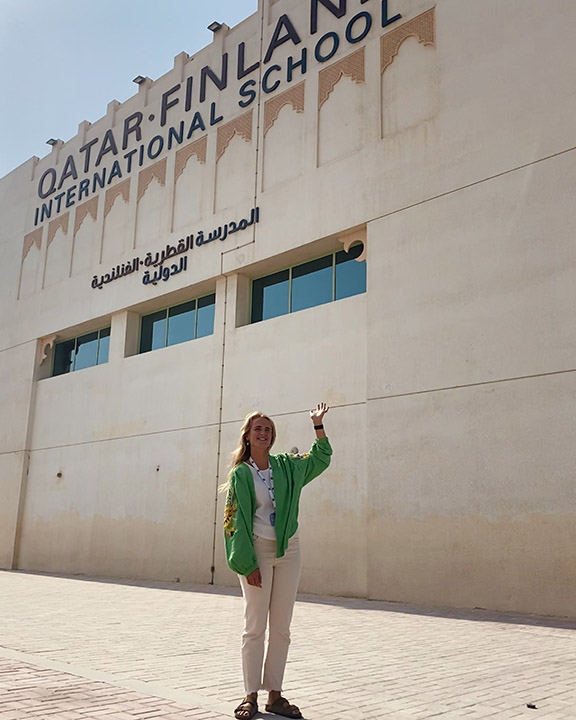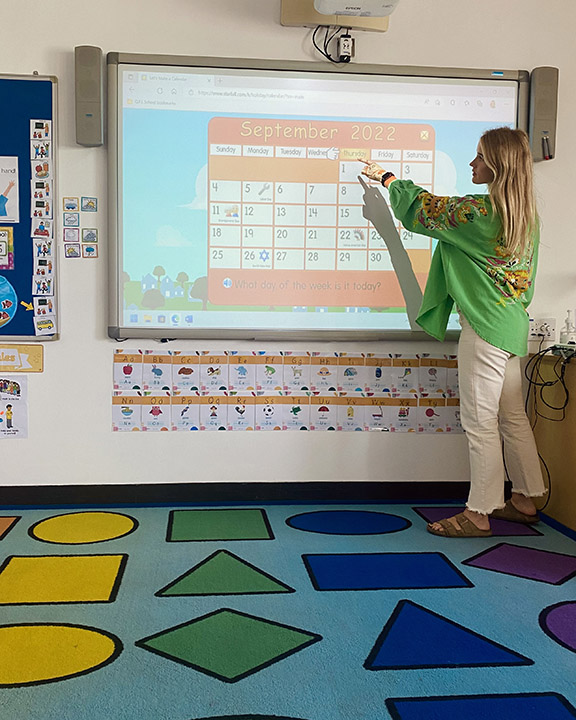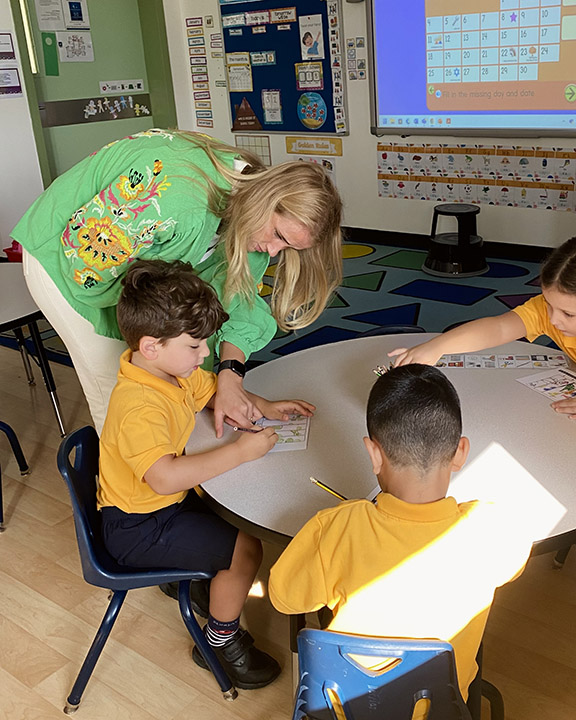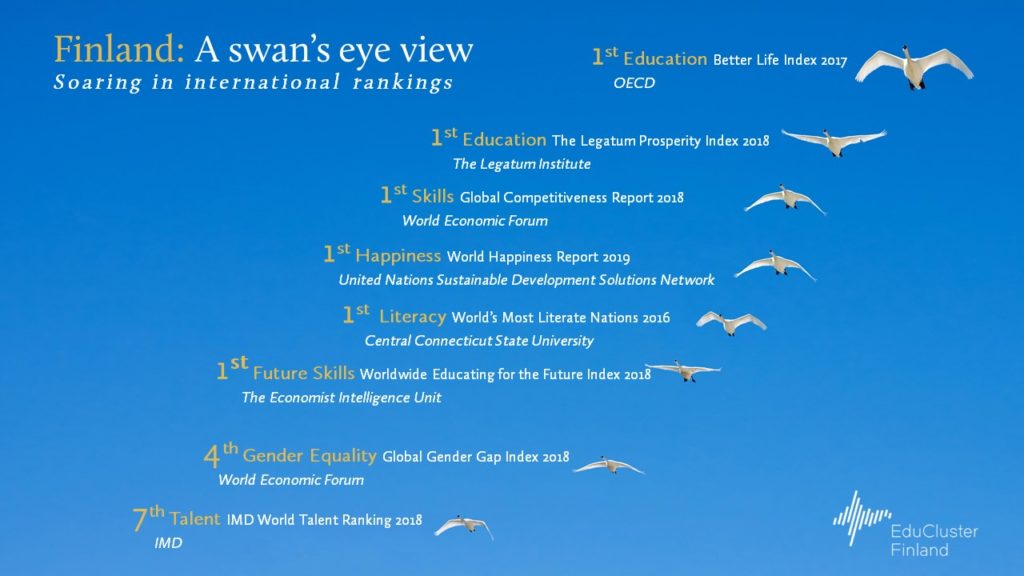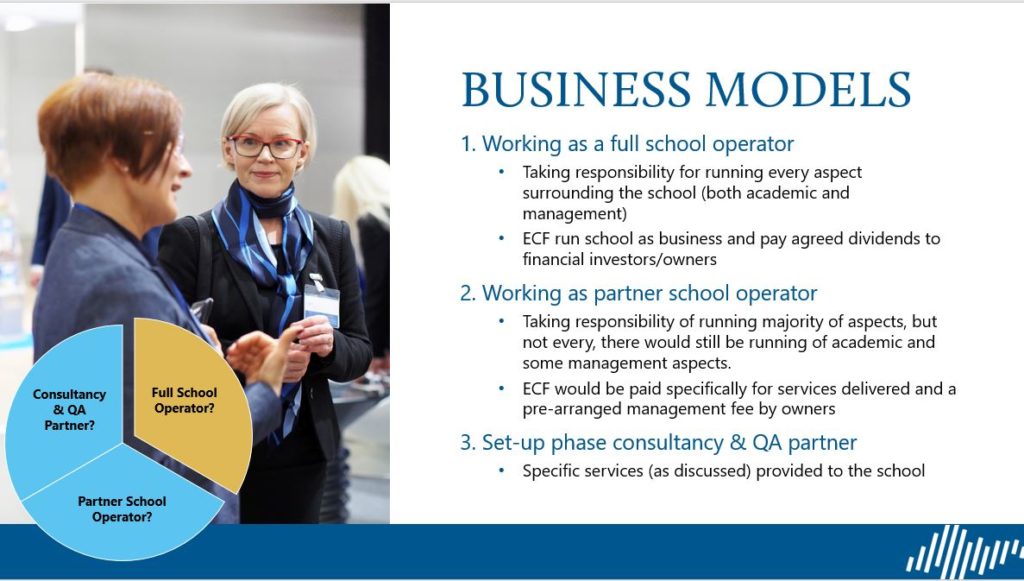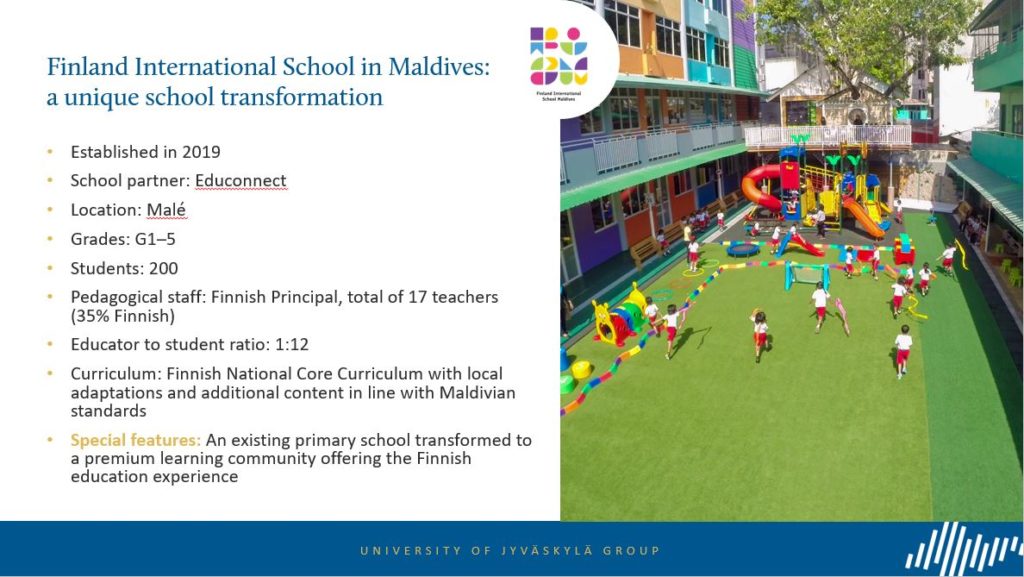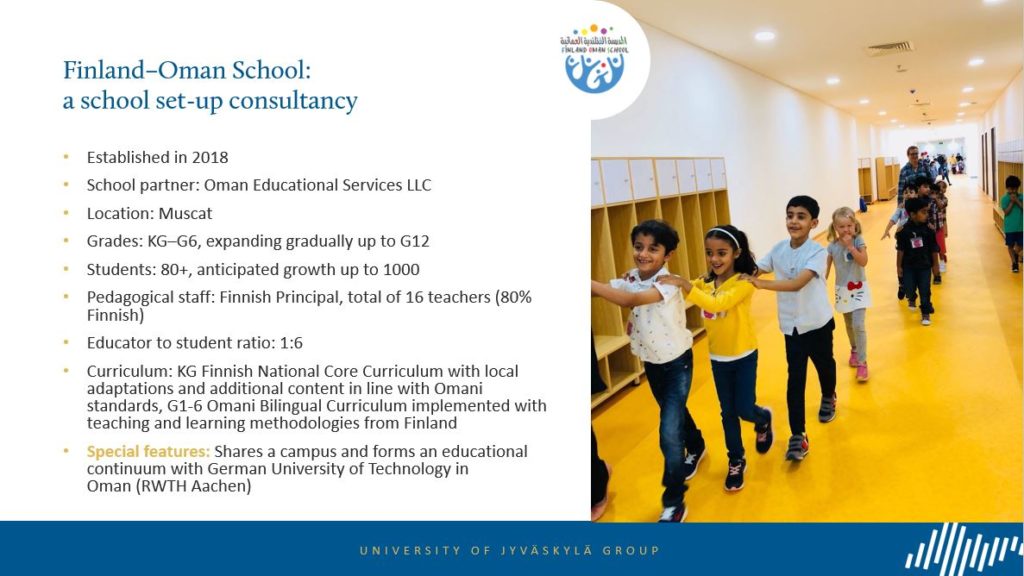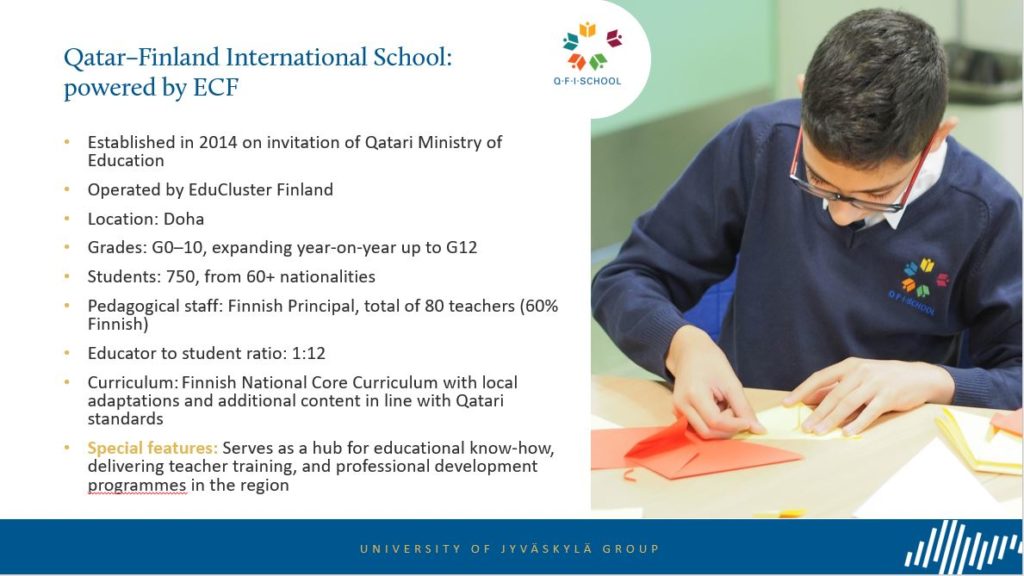Teacher’s Professional Development Programme
As an educator you want to choose how to develop yourself professionally. To do this you need to know about key trends and innovation which can make a difference. Then you want to be equipped with practical tools and activities to take back to your school. That’s why we develop programmes for educators, by educators!
Example of a Teacher’s Professional Development Programme
The programme can be modified (time and topics) to suit the needs of the teachers and the school.


Topics of Teacher’s Professional Development Programme
The Teacher’s Professional Development Programme can cover a variety of topics of your choice. To create the most effective and engaging programme, we are here to help. Take a look at what we offer and contact us for guidance and support.
If you’d like to learn more, click the Contact Us button below!
Generating High Impact Learning Practices
Developing high-impact teaching and learning activities for Generation Z
Finland has an impressive track record in challenging conventional wisdom and showing evidence of teaching practices that are particularly successful. Educational practices in Finland are also highly adaptable. This adaptability has been vital in responding to the learning needs of Generations Z and A (born 1995-2025). These young people are neo-digital natives who devote considerable time and energy to on-screen activities. This affects how they behave at school, and in classrooms.
In long-standing Finnish tradition our teachers have turned challenges into opportunities, and problems into solutions. This is through designing and testing high impact practices. These practices are then compared to the outcomes of global educational meta-analysis research.
Perhaps surprisingly they include a wide range of activities such as in-class methods, augmented and virtual reality, school interpersonal atmosphere, homework, play, length of school breaks…) all of which have been found to have a high effect size – literally high-magnitude features of school life which work well with students of today and tomorrow.
This enables Finland to sustain high performance global ranking in education year-on-year by designing, testing, and scaling up quality teaching and learning practices. Finland’s ability to score high levels of success in global comparisons of education since 2000 is based partly on the 3 L’s – Look, Listen and Learn (look at what is happening in society, listen to what students, parents and teachers say, learn to make change happen).
The secret of success is where a school
- develops a school culture which combines successful performance with maximum well-being
- examines if and how practices have been adapted in recent years
- consults with students and parents on preferred ways of learning
- creates a Finnish-style plan to enable change management
- demonstrates successful learning outcomes through diverse channels
11st place
national digitalization in Europe, Digital Economy and Society Index, 2019
Enhancing Creativity
Fostering creativity in classrooms
Creativity is the way, and innovation is the outcome. When talking about important future skills and competences, creative thinking always comes at the top of the list. Sophisticated artificial intelligence may soon perform many tasks previously done by people, but creative thinking is an area where human curiosity will continue to outshine Big Data into the foreseeable future.
Many countries have directed their education systems to focus on mathematics and reading literacy skills that are measured with regular standardized testing. Therefore, attention in other areas is generally given only to academic performance as measured by standardized tests. Finland has bypassed this trend by maintaining focus on both achievement of strong academic skills and enhancing creative thinking across all subjects.
Globally there is an increasing realization that some learning may be highly valuable even though it cannot easily be measured. Creativity is one of these elusive but essential curricular goals. So much so that PISA 2021 will now examine how schools within educational systems achieve high levels of creativity, an increasingly recognised global competence, in learning outcomes.
Creative thinking can be successfully realized in a school that
- embeds creativity training in a wide spectrum of subjects and learning activities
- understands that creativity can be found everywhere, and does not require exceptional skills or talent
- tolerates divergence in the thinking of students
- pays attention to student motivation and emotions when practicing creativity
- ensures that student do not lose their creative ability as they progress through the school system.
3rd place
most innovative country globally, Bloomberg Innovation Index, 2019
3rd place
world innovation champion, Consumer Technology Association, 2019
Top 10
enabling, attracting and retain talent in the world, Global Talent Competitiveness Index, 2019
Top 10
most innovative countries, Global innovation Index, 2018
Mobilising Entrepreneurial Education
Encourage knowledge, skills, and motivation for entrepreneurial success
Entrepreneurship and an entrepreneurial mindset are something that can be learned. The components are creativity, ability to innovate, capabilities for risk management, ability to take responsibility, planning and setting goals, and managing activities to achieve these goals. As labour markets continue to experience rapid and often unpredictable change, entrepreneurial education has become a major area of interest in school development.
In Finland entrepreneurial education serves to target, develop and nurture enterprising discovery processes for students. Even if some students are not interested or otherwise engaged with developing economic ventures or enterprises, the personal qualities developed in these programmes are of value to all. Being entrepreneurial is not only about skills in planning, finance, and organization. It is a way of thinking.
The secret of success is where a school
- applies a Finnish-style entrepreneurial curricular action plan
- develops co-learning methods to integrate entrepreneurial studies into other subjects
- creates the learning environment(s) to support the entrepreneurial studies
- enables students to create their own innovative ideas
- networks with working life and stakeholders to establish opportunities for ventures to be fielded and tested
8th place
best place to be a social entrepreneur, Thomson Reuters Foundation and Deutsche Bank, 2019
1st place
best country for business in the world, The Global Innovation Index, 2019
1st place
best country for business career skills, Coursera Global Skills Index, 2019
Advancing Student Wellbeing
Enhancing student mental and physical wellbeing to strengthen school communities
Healthy child development from early years through to late adolescence benefits from an informed and supportive relationship between home and school. In Finland, each school community is seen as being as strong as its weakest link. This has resulted in Finnish schools giving a high level of attention to identifying strengths and weaknesses of relations (teacher-student; home-school; school-society; student-student) and developing processes for maintaining high levels of diligence and proactivity. It has also resulted in Finnish public schools across the country not having a high level of variance in relation to care, quality, and performance.
The fact that students represent the largest number of people in any school community means that Finnish schools pay considerable attention to student wellbeing. This may be reactive (recognising a localized problem such as bullying) or pro-active (reacting to incoming data on future trends such as increases in student weight gain).
Wellbeing is a prerequisite for successful learning. Evidence shows that the experience of a positive, supportive, and collaborative atmosphere enhances the well-being and performance of everyone, students, teachers, and parents alike. A key Finnish strategy involves maximizing communication within the school on detecting potential problems (which may range from individual student loneliness through to problems with cyberbullying). Then, rapidly activating consensual localized solutions based on multi-professional research and insights.
The secret of success is where a school
- enables recognition of localized problems and national/global trends (such as cyber security; healthy eating; impact of digital lifestyles on mind and body; fears and stress resulting from external realities such as covid-19)
- rapidly activates practical solutions through stakeholder engagement and outreach to multi-professional insights
- develops a culture of student engagement in school operations (such as student councils)
- provides teachers with skills to detect potential individual or group causes for concern
- enables effective home-school communication
1st place
happiness, World Happiness Report, 2019
3rd place
childhood security, Global Childhood Report, 2019
3rd place
students (15 years) life satisfaction in OECD countries, PISA, 2018
Enabling Phenomenon-based Learning
Finland’s new curricular innovation: developing systems thinking and global competences
Finland is a global leader at integrating learning through different subjects using high-impact teaching methods. It also believes that education is a process not an event. Maintaining its position at the top of international rankings such as PISA means continuously innovating and responding to rapid changes in the local and global environments. This is where Phenomenon-based Learning (PhBL), which is a sophisticated form of problem-solving, is a force to achieve excellence in teaching and learning practices, and overall high educational performance.
PhBL is a curricular technique which has become the hallmark of the latest Finnish National Curriculum Framework. It involves integration of different subjects to create a single learning experience in which students look at a phenomenon from different academic real-world perspectives.
The intended learning outcomes include knowledge about the topic but most importantly systems thinking (seeing patterns in information). The result is development of advanced problem-solving skills and the potential for creative thinking. PhBL takes project-based learning to a new level of higher order thinking through deep focus on looking at a topic from different academic perspectives (such as water, carbon footprint, migration, pandemic, physical wellbeing).
The secret of success is where a school
- Recognize the advantages of developing systems thinking
- Provides professional development for upskilling teachers of different subjects
- Increases the level of inter-disciplinarity in the curriculum
- Engages students with topics of high relevance to society
- operate small-scale PhBL cross-cutting projects (app.20 hours) each academic year
2nd place
most skilled workforce globally, World Economic Forum, 2019
Promoting Inclusive Learning
Achieving inclusion through individualized teaching practices
Like DNA each student is unique. Being unique makes that individual special.
Certain students have special needs, at certain times, in our schools. The need may not be a problem. It could be an opportunity because a child appears particularly gifted or skilled in achieving something valued in society. It could be a challenge caused by the student facing significant learning difficulties in a subject, having suffered loss of a loved one in the family or being hospitalized due to illness.
In Finnish schools the logic is that every child is likely to have some form of special need at some point in their school career. This need, whatever the cause, can result in barriers to learning. Overcoming these barriers in a timely and constructive way is one of the drivers of success in Finnish education. This results in high rates of inclusion (students not separated due to long or short term physical or psychological challenges) and equally high levels of student retention.
When a student has a special need the Finnish school increases opportunities for individualized learning. This does not necessarily mean that the student studies alone in isolation from others. It means that learning pathways are provided by the teacher for the student to successfully manage a period of prolonged absence from school (such as hospitalization), a problem learning a subject such as maths (dyscalculia), reading (dyslexia), problems with concentrating on learning (attention deficit disorders), or disruptive behaviour.
Overcoming barriers to education means developing innovative ways to maintain the student’s membership of the school community (to avoid exclusion and maximize inclusion) and enhance the achievement of successful learning outcomes (through emotional support mechanisms and academic learning support).
The secret of success is where a school
- promotes and values the importance of individualized learning and teaching practices
- has an operating culture enabling all students to reach their full potential
- is proactive in identifying the early signs of students’ support needs
- provides preventive methods and properly timed support
- develops teachers’ competences on inclusive teaching practices
3rd place
gender equality, Global Gender Gap Index, 2020
Integrating STEAM Education
Gaining skills for success in the ever-changing World
About 20 years ago it was evident that students around the world were not performing well in science, technology, engineering and mathematics (STEM).In addition there was a noticeable gap between boys and girls taking an interest in studying, and pursuing a career in science and technical fields. As a result, specialized programmes were developed enabling students to learn about social problems from scientific, mathematical and technical perspectives. STEM then became STEAM, as in Finland, because of recognition that some arts subjects (e.g. history, geography, multimedia, entrepreneurship) should be included in these ground-breaking inter-disciplinary programmes.
STEAM combined creative thinking, understanding of the real world, and scientific study into a single learning experience.
In an ever-developing world, it is essential that schools prepare students for many roles and eventualities, and not just for a single career. Students need to understand concepts from multiple angles. Then they can solve problems by creating meaningful inter-disciplinary solutions. This is the core of STEAM, bringing together multiple disciplines and providing students with a holistic understanding of knowledge, skills and problem-solving challenges.
Finland has been practising STEAM Education successfully for many years, as can be seen by the success in PISA and TIMSS. One reason for this is that all teachers receive essential pedagogical training in methods suitable for STEAM as part of their education. Another is that it has been realized in schools, and also as extra-curricular activities.
The secret of success is where a school
- looks at diverse natural, technological, and social phenomena from different areas of expertise
- continually practices finding the interconnections between STEAM subjects
- is willing to cross the boundaries and set its own traditions
- encourages students to build confidence for learning science and technology
1st place
educating for the future, The Worldwide Educating for the Future Index, 2018
1st Place
performance of universities in the world, Ranking of National Higher Education Systems, 2018
Developing Learning Environments
Understanding how the physical environment affects learning performance
Finland excels in both designing new school facilities and finding ways to convert existing structures into effective teaching and learning spaces. Well-designed learning environments form a pedagogically versatile setting to facilitate the flow of learning. The key is to create a healthy space which nurtures a positive pedagogical environment for teachers and students.
A healthy learning environment needs to facilitate the use of individualized learning, group work, team teaching, and judicious use of technology. The research shows that physical differences of classroom environment can account for a highly significant improvement in learning outcomes.
In Finland, the design of school and classroom spaces involves pedagogical architecture. In the past we have had what has been called the egg-crate model for classroom design. Now with changes in awareness of design, construction materials, and most importantly the interface between architectural and pedagogical expertise, it is possible to be highly transformative in adapting interior and exterior school spaces.
Finnish school design takes into account the impact on cognitive and psychological mindsets of teachers, students, and parents in relation to the intended learning outcomes (a healthy, well-educated, and confident student).
This means attention is given to accessibility (for students who have physical impairment), floor space size (m2 per student), acoustics and sound control (sound-absorbing materials), colour (aesthetics), furniture (flexible and ergonomic), indoor air quality (mixture of fresh and re-circulated air, temperature and dust control), natural light control (windows and blinds), electrical points (assuming use by students and use of own devices), storage space (for student clothes and bags), internet access (strength and breadth), and projection qualities amongst others.
The secret of success is where a school
- understands the relationship between environment, student wellbeing and learning performance
- Conducts cost analysis of return on investment for facilities planning
- Analyzing future pedagogies and their impact on the physical environment
- Review of existing physical environments through a stakeholder engagement analysis
- Conduct physical infrastructure curriculum mapping review
1st place
environmental health, Environmental Performance Index, 2018
Nurturing Collaborative Learning & Teamwork
Realizing teacher teamwork in everyday school life
Finnish education is based on socio-constructivist theories of learning. Active student learning and collaboration from grade 1 onwards leads to successful learning of knowledge and skills. This approach can be increasingly seen in leading schools. However, this is only half the picture.
If a school is to become a powerful learning community, teachers also must cooperate, collaborate, and set an example of genuine teamwork – now a key 21st Century competence.
Finnish education recognised this some 30 years ago and has developed systemic ways in which the curriculum can be operationalized, and teaching schedules synchronized, to make teacher teamwork a normal practice in day-to-day school life. From an administrative point of view this must be done without extra expense, and with maximum efficiency.
The Finnish co-teaching movement originally started with special education teachers entering classrooms to support students who struggle with learning. Today, co-teaching can be seen in many ways from primary to high school. The outcomes are impressive in relation to time-on-task and student learning. Research shows that co-teaching improves teachers’ job satisfaction and supports professional learning.
The secret of successful is where a school
- has a systemic plan which continuously boosts fluidity of teaching practices
- communicates the value of teacher collaboration
- identifies and harnesses individual teachers’ strengths in creating opportunities for teamwork
- clarifies co-teacher roles and responsibilities and enables co-planning
- organizes professional development to support co-teaching practice
1st place
best country in Europe in lifelong learning, European Innovation Scoreboard, 2019
1st place
skills of workforce, quantity and quality of education, Global Competitiveness Report, 2018
1st place
delivering future-oriented skills in education, Economist Intelligence Unit, 2019
Achieving Successful Bilingual Education
Developing Content and Language Integrated Learning (CLIL)
Originally developed in Finland CLIL has become a global change agent in radically improving how languages are taught and learnt. As with Linux, which was also developed in Finland at the same time, CLIL is a type of open-source pedagogy that provides an integrative methodology for different school contexts. Referred to as the ‘ultimate communicative methodology’ CLIL has become a signature pedagogy for leading edge schools in countries around the world. These schools may be fully international, bilingual, or those in which high levels of additional language competence are desired.
CLIL is a dual-focused approach in which an additional language (most commonly English) is used for the simultaneous teaching of both content and language. It is used in schools where more than one language is used for the learning of both content and language. It is not a new form of language education, and it is not a new form of subject education. It is an innovative fusion of both. Put simply it is a bilingual and not a monolingual methodology such as English as the Medium of Instruction (EMI).
Development of CLIL is usually through the 5c Framework where teaching focuses simultaneously on content (curricular topics); communication (essential language needed to learn about the topics); cognition (thinking skills and processes required to learn about the topic); competences (skills to carry out actions relating to the topic); and community (linking of topics to the local and global worlds).
The secret of success is where a school
- Establishes a strategy to become a bilingual, international or enhanced language- learning environment
- Adopts a 5c Framework for teacher professional development
- Accesses or adapts appropriate learning resources
- Combines use of own-device digital technology to support learning, particularly out-of-class
- Activates professional development for teachers
5th place
adults’ English skills in Europe, EF Proficiency Index, 2019
Finland original creation of Content and Language Integrated Learning (CLIL), 1994
Career Guidance & Navigation
Developing student’s career management competences to navigate their future working lives
Yesterday people thought that schools prepared students for careers according to predictable paths, academic, vocational – one career one future – graduate, work, retire. This person for that job. That person for this job. One walk, one talk.
Today we need to prepare students for tomorrow.
This means that schools actively help students build and navigate career paths from an early age. This is not just through guidance. The key is in equipping students with confidence, knowledge, and skills so that they can become involved and inspired in thinking about future study options and potential careers.
Finland has specialized in re-shaping the educational curriculum and practices so that students can build navigation knowledge and skills from an early age. Career Guidance and Navigation assumes that by early adulthood each student will face a world of re-shaped work cultures and that requires us now to re-shape educational practice.
The secret of success is where a school:
- creates a curricular plan that operationalizes Career Guidance & Navigation
- establishes career guidance and navigation into the core of the school vision
- communicates the why, what, and how of effective career management to students and families
- networks with other schools, colleges, and working life on outreach activities
1st place
educating for the future -future skills, OECD Better Life Index, 2017
1st Place
human capital, health and skills of the workforce, Global Competitiveness Report, 2018
Cultivating Global Competences
Realizing PISA global competence-based learning in subject teaching
Leading schools have talked about developing competences for many years. But ‘walking the talk’ means taking action.
Involving students of all ages, Global Competences develop the capacity to examine life from essential perspectives.
Finland has been instrumental in successfully enabling students to gain these competences through what we call curricular transversals. These transversals are learning modules which link to topics in the existing curriculum. They systematically develop the knowledge, values, skills, and attitudes of students from Grades 1-12. This is one way in which schools in Finland truly internationalize, locally and globally.
The secret of success is where a school
- establishes global competences into the core of the school vision
- communicates the cognitive and socio-emotional learning goals
- creates a curricular plan that operationalizes the 2018 PISA GC Framework
- develops student competences through Finnish transversals through all grades
- enables students to show evidence of learning through formative assessment
- networks with other schools which realize this trans-national education
3rd place
students (15 years) life satisfaction in OECD countries, PISA, 2018
1st Place
skills of workforce, quantity and quality of education, Global Competitiveness Report, 2018
1st place
delivering future-oriented skills in education, Economist Intelligence Unit, 2019
If you’d like to learn more, click the Contact Us button below!

